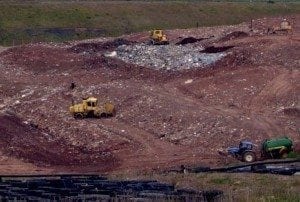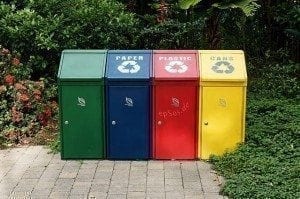Guest post by Anne Staley
Last year, Sims Metal Management, one of the world’s leading scrap metal management companies, celebrated the first anniversary of its mobile education center called Recyclarium. Designed as an innovative learning experience for students and their families, the 16-foot trailer consists of themes covering the lifecycle of products – right from manufacturing down to recycling.
The initiative taken by Sims Metal Management (which recovers and recycles 14 million tons of metal each year at its scrap metal recycling facilities around the world) seems to have made the right start so far as educating children about the environment is concerned.
 The products we use in our daily lives impact the climate at every stage of their lifecycle. From the way we manufacture these products to the way we use them and even the way they’re disposed – it all has a bearing on the climate.
The products we use in our daily lives impact the climate at every stage of their lifecycle. From the way we manufacture these products to the way we use them and even the way they’re disposed – it all has a bearing on the climate.
If you’re wondering how human consumption has an impact on the climate, there’s a one-word answer for it – energy. All the activities related to consumption whether it’s manufacturing, distribution, or the management of the resulting waste, require energy.
Where does this energy come from? It mostly comes from fossil fuels, which are universally acknowledged as the largest source of greenhouse gas emissions (GHG).
According to a 2009 study conducted by the U.S. Environmental Protection Agency (EPA), these heat-trapping greenhouse gases are the primary reason for global climate change and the rate and magnitude of human-induced climate change will continue to worsen over time in the absence of any regulatory action.
What we’re staring ahead at are more extreme weather phenomena like floods, heat waves, storms, and other climatic catastrophes.
Climate change & Consumption: ticking time bomb
Circling back to the point that human consumption has a huge impact on climate change, the EPA report indicates that as much as 42 percent of greenhouse gas emissions in the U.S. result from the energy used for the production, processing, transportation, and disposal of the goods we use (29 percent) and the food we eat (13 percent).
The other major contributors are passenger transport, HVAC & lighting, and appliances and devices. Traditional waste management systems, which include landfilling, incineration, etc., account for 1 to 5 percent of America’s greenhouse gas emissions.
Given this fact, it should hardly come as a surprise that landfilling features last on EPA’s list of preferred waste management methods after reuse, recycle/compost, and energy recovery.
Recycling & climate change: The lesser known truth
 Most of us are aware of the direct benefits of recycling, but what about indirect benefits? They are not as commonly known and one of the greatest benefits of recycling is prevention of greenhouse gas emissions.
Most of us are aware of the direct benefits of recycling, but what about indirect benefits? They are not as commonly known and one of the greatest benefits of recycling is prevention of greenhouse gas emissions.
To understand this lesser known correlation between recycling and global climate change, we need to drill down and learn how human consumption leads to greenhouse gas emissions in the first place.
Like mentioned earlier, these greenhouse gases are released at every stage of a product’s lifecycle. Here’s what happens and how recycling can help:
- Material extraction: When raw materials are extracted from the earth, they require a large amount of energy, most of which comes from burning fossil fuels leading to greenhouse gas emissions. Recycling generally uses much less energy than extracting and processing virgin materials.
- Manufacturing: The process of manufacturing products also requires a great deal of energy, which again leads to greenhouse gas emissions. Reducing consumption or manufacturing products with less or recycled materials helps cut back greenhouse gas emissions.
- Distribution: All products need to be distributed at various stages of their lifecycle. Distribution by any mode of transportation requires fossil fuels resulting in greenhouse gas emissions and consequently global climate change. Buying local, sustainable, and recycled products helps reduce greenhouse gas emissions.
- Usage: All products require energy to be used. Food needs to be cooked, appliances need to be powered on, and cars need fuel to run…get the drift? Using energy-efficient products and unplugging devices when they’re not in use are a couple of ways to reduce the consumption of energy at this stage of a product’s lifecycle.
- End-of-life management: This refers to the way we manage our stuff once it has reached the end of its useful life. Landfills, where a lot of our solid waste ends up, are the largest human-caused source of methane – a greenhouse gas 72 times more potent than CO2 over 20 years. Any other alternative – reusing, recycling/composting, or energy recovery – is preferable to this.
According to the EPA, increasing the national recycling rate to 35 percent would reduce greenhouse gas emissions by 9.8 MMTCE. Clearly, there is a definite correlation between recycling and climate change, and the sooner we realize it, the better it is for our planet!
Image credits: Emily Dodd, epSos.de, courtesy flickr



I like that you mentioned that recycling uses less energy compared to the production of the materials. With that in mind, I think I would have to suggest to my uncle to try bringing his unused things to a recycling business. He usually leaves lots of scrap metals due to the nature of his job. This information will at least make him realize that he can do something to help the planet.